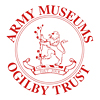

Military Medal
Thomas was born in around 1898 in Waterhead, Oldham. His father was called John and his mother was Mary. In 1911 he was one of 8 children, 3 of whom had died. In that year his siblings were Margaret, who was 14; Mary, aged 11; James, aged 10 and John who was 7. In 1901 Thomas had lived with an 8 year old sister called Margaret and a 6 year old named Mary. Also, a brother named John had been born in 1891.
In 1891 Thomas' father John had worked as a paper-maker and his mother Mary was a cotton spinner. They lived with her mother at 16 Pit Street in Heywood, Lancashire. John died between then and 1901. In this year Mary ran the Collier's Arms, at 186 Bury Road in Spotlands, Rochdale.
By 1911 the family had moved to 132 Eldon Street in Oldham. Mary no longer worked, but Margaret and Thomas did. Thomas was an apprentice moulder at a textile machine works. Margaret worked in a cotton mill.
The First World War broke out on the 4th August 1914 and Thomas joined the Army on the same day. He enlisted in the 4th Battalion of the Manchester Regiment and was given the service number 2089. This was a unit of the Special Reserve.
A Special Reservist was a man who had not previously served in the Regular Army. Unlike the Territorial Force, which was intended to serve as complete units within the UK or Empire, Special Reservists could be sent to join Army units anywhere as individuals or in small groups.
In peacetime Reservists kept their civilian career and trained to be a soldier for a short period every year. Now that Britain was at war they had all been called into the Army full-time. The 4th Battalion was sent to guard the Humber estuary later in August, and then moved to Riby, near Grimsby in Lincolnshire during October.
We don't know anything about the first half of Thomas' war. We know that he was sent overseas and joined the 20th Battalion of the Manchester Regiment whilst they were serving in France.
From March 1917 the 20th Battalion was stationed at Bucqouy in France, where the Germans had abandoned their trenches. After around 3 months out of the line they then moved to the Ypres sector in Belgium in late August. Here they joined the Passchendaele Offensive.
The conditions around Ypres during this offensive were terrible. The muddy ground was full of flooded shell holes which made it impossible to dig deep trenches, which were needed because the British were under constant shell fire.
The 20th Battalion left Ypres at the end of October and on the 9th November they were sent to Italy. On the 24th October at Caporetto the Italians had suffered a serious defeat in their fight against Austria Hungary, so the British and French sent several units to help them.
The front line for the 20th Battalion was 4000 feet above sea level along the Piave River. The area was quiet and Thomas will have seen very little action during his time in Italy. He had been promoted to Lance Corporal by August.
The largest operation the battalion took part in was a raid on the village of Canove de Sotto on the night of the 8th and 9th August. Only A and C Companies, around half the battalion, were involved. The raid was launched at midnight, at the same time as a number of other raids in different areas of the line. Thomas took part in it.
The 20th Battalion's raid lasted 2 hours. They captured 2 Austrian officers and 49 of their soldiers, as well as 3 machine guns and 'plenty of stores'. They also killed 'many of the enemy'. The battalion lost 3 men killed, 12 wounded and 2 missing. After they had left the front line the 2 Companies were able to rest for the remainder of the day.
On the 27th the battalion re-enacted this raid as a demonstration. 'Many French and Italian staff officers were present'. This helped to share skills and experience between the Allies.
Three days later on the 30th August Thomas was awarded the Military Medal (MM) for his part in the raid. He was one of 13 men decorated. Four received the Military Cross, 2 the Distinguished Conduct Medal and 7, including Thomas, the MM.
Thomas was presented with the MM ribbon by General Sir Herbert Plumer, the Commander-in- Chief of British Forces in Italy. He would receive the medal itself after the war. His award would be published in the London Gazette on the 24th January 1919.
In September 1918 the 20th Battalion returned to France and joined the Allied offensive that had begun the previous month. They first went into battle on the 3rd October. On this day they attacked a German position near Beaurevoir. The position was part of the Hindenburg Line, so it was well defended, but by the 7th the British had broken through. They were then able to make a large advance on the 8th.
This success came at a price. Around 50 members of the battalion were killed, and many were wounded. Thomas was injured in the right arm. This required treatment in the UK. On the 26th October the Oldham Evening Chronicle newspaper reported that he was 'in hospital in Liverpool'. They gave his address as 3 Wainwright Street, off King Street in Oldham. By this time he had been promoted to Corporal.
The war ended on the 11th November. Thomas' wound did not heal enough to return to duty. On the 30th April 1919 he was discharged as 'surplus to military requirements (having suffered impairment since entry into the service)'. He was awarded a Silver War Badge, with serial number B223626, to show that his discharge was honourable.
The rest of Thomas' life remains a mystery. He died in Oldham between April and June 1968. He was 70 years old.
As well as his Military Medal, Thomas was also awarded the British War Medal and the Allied Victory Medal for his Army service.




